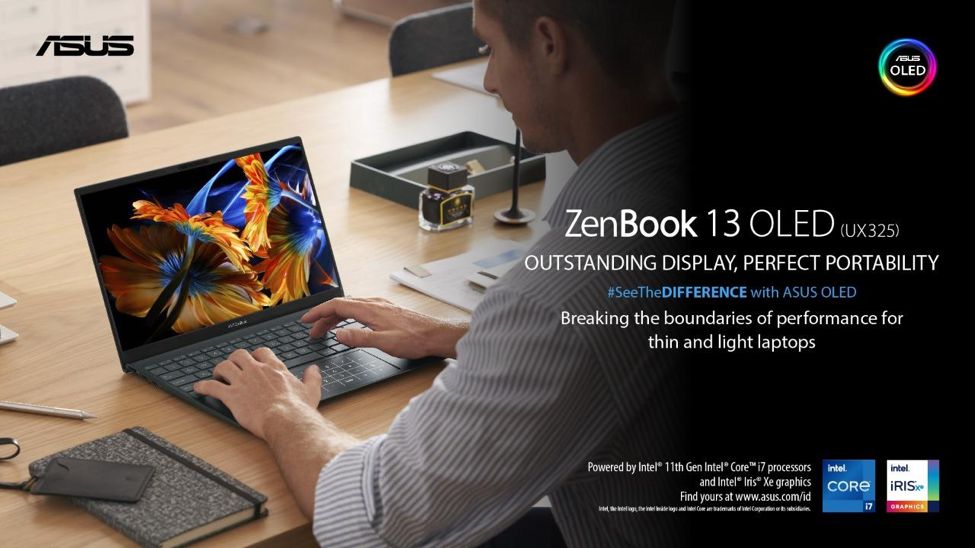Jakarta – detikcom recently conducted a survey using quantitative and qualitative methods to find out the views of laptop users on ASUS OLED screen technology. The survey was conducted last August.
The results of the survey found as many as 66.50% of respondents were in front of a laptop screen for 5-10 hours every day. Even so, 68.10% of respondents claimed to know the dangers that can be given by blue light radiation emitted by laptop screens.
In addition, 66.50% of respondents agree that the presence of blue light radiation in laptops also affects their choice in choosing a laptop model.
On the other hand, the respondents also said that the quality of color and visual details on the laptop screen is very important to support their activities. As a result, 80.20% of respondents in this survey agree with this.
Indeed, these factors are some of the reasons people choose their laptops. For that, ASUS answered the wishes of these respondents by presenting ASUS OLED laptop screen technology.
|
ZenBook Pro Duo 15 OLED (UX582) (Photo: ASUS) – |
Laptops that already use ASUS OLED screens come with the best visual quality and are created for professionals in the creative industry, so that the screen display is clearer and more beautiful. Not only that, ASUS OLED is also able to reduce the level of blue light radiation that is harmful to eye health by up to 70%. As a result, the eyes of laptop users with ASUS OLED screens will not get tired easily.
Even so, initially 48.70% of respondents did not know about ASUS OLED screen technology and 40.10% of respondents also did not know HDR technology. However, after being given information about the advantages of ASUS OLED in the survey, 90.60% of respondents were interested in using this latest laptop screen technology from ASUS.
|
ZenBook Pro 15 OLED (UX525) (Photo: ASUS) – |
Therefore, detikcom again conducted a qualitative survey of 10 people who already use laptops that use ASUS OLED. Overall ASUS OLED laptops get review good from the user
In terms of screen quality, 9 out of 10 user agree ASUS OLED does not cause eye fatigue or discomfort when using it during a day’s work. Level brightness and the color is also appropriate so as to make the eyes comfortable.
10 of 10 user also agree that this laptop is able to provide comfort when watching videos to movies with a screen that provides visual details both in terms of colors and images. They also agree that the ASUS OLED screen is an essential feature to help their daily work and entertainment.
9 out of 10 user also agree their productivity as content creator in the digital world is increasing, because they are comfortable longer in front of the laptop, because of the quality of the ASUS OLED screen. Para user also amazed by the performance of the ASUS OLED which is very capable
ASUS OLED also has features that help users content creator to produce content. These features include a very high level of industry-standard color reproduction with color gamut 100% DCI-P3.
ASUS OLED also has the best level of color accuracy certified by PANTONE Validated Display, as well as the best HDR technology support with a contrast ratio of up to 1:1,000,000. Everything helps content creator to create the best work.
Content creator also said that laptops with ASUS OLED screens maintain eye health, not causing eye fatigue due to TÜV Rheinland certified Eye Care technology. For content creator, laptops with ASUS OLED screens are ideal for long-term use without worrying about causing fatal damage to the eyes.
|
ZenBook 13 OLED (UX325) (Photo: ASUS) – |
Supported by the HDR feature, laptops with ASUS OLED screens can present images with very clear and rich colors. Carrying the VESA DisplayHDR True Black certification, the ASUS OLED screen is capable of displaying true black colors, making it ideal for creating the best content or enjoying various multimedia offerings with a cinema-like feel.
Some laptops that have adopted ASUS OLED display technology and are currently available are the ASUS VivoBook Ultra 15 OLED (K513), ZenBook Pro Duo 15 OLED (UX582), ZenBook Pro 15 OLED (UX535), and ZenBook 13 OLED (UX325).
VivoBook Ultra 15 OLED (K513), ASUS provides this laptop with a processor up to 11″th Intel® Core™ i5 and Intel® Iris® Xe graphics. ASUS also provides this laptop with 8GB of built-in RAM which can still be upgraded up to 24GB.
VivoBook Ultra 15 OLED (K513) is also equipped with NanoEdge display technology which features ultra-thin bezels so that this laptop appears with screen-to-body ratio up to 85% for a more immersive visual experience.
While the ZenBook Pro Duo 15 OLED (UX582) is equipped with a 4K resolution touch screen. This laptop also comes with a second screen ScreenPad™ Plus which is also equipped with features touchscreen 4K beresolusi.
ScreenPad™ Plus allows users of this laptop to do multitasking more comfortable and has been equipped with software which can bring a dedicated control panel for applications editing from Adobe, such as Photoshop, Lightroom, After Effects, and Premiere.
This laptop is also supported by up to 10th Gen Intel® Core™ i9 high performance processor and NVIDIA® GeForce RTX™ 3070 GPU.
On the other hand, ZenBook Pro 15 OLED (UX535) is equipped with the revolutionary ScreenPad™ 2.0 display. While the innards of this laptop are planted up to 10th Gen hingga Intel® Core™ i7 high performance processor dan GPU NVIDIA® GeForce® GTX 1650 Ti.
This laptop is also equipped with a 15.6-inch screen, 4K resolution, and carries NanoEdge Display technology with screen-to-body ratio up to 88%.
There’s also the ZenBook 13 OLED (UX325) which weighs just 1.14 kg with a 13.9mm thin profile. Although thin and small, this laptop still has an HDMI port, Thunderbolt™ 4 USB-C®, USB Type-A and microSD card reader.
In terms of performance, this laptop is equipped with up to 11th Gen Intel® Core™ i7 Processor which has been equipped with an Intel® Iris® Xe integrated graphics chip which powerful for daily needs but very energy efficient.
For more information on advanced ASUS OLED technology and the ASUS OLED line of laptops, you can check here.
–


